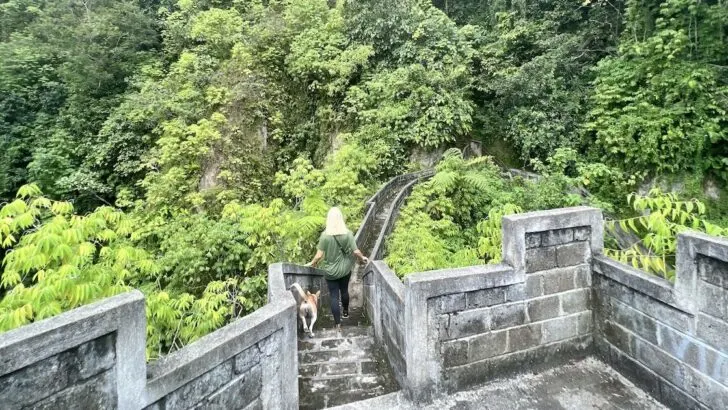Scaling a Great Wall of China replica to reach a tiny silversmiths village in west Sumatra isn’t exactly an everyday activity.
However, that’s exactly what you can expect when visiting Koto Gadang from Bukittinggi.
This small village is located just a short drive away from Bukittinggi, one of west Sumatra’s largest cities.
Best visited in one day or an afternoon, you can reach it by hiking the Great Wall of Koto Gadang over the Sianok Canyon.
Koto Gadang has produced a long list of notable Indonesian figures who fought for Indonesian independence under Dutch colonial rule.
However, it’s best known for its traditional silversmiths, who produce intricate silver Minangkabau models and some of the finest jewellery in Indonesia.
It also has one of the largest mosques in Indonesia, built in traditional Minangkabau style.
Before I jump into the best things to do in Koto Gadang and how to get there, check out my detailed Sumatra backpacking itinerary for more inspiration for your north and west Sumatra itinerary.
If you’re spending a good amount of time in west Sumatra, you might be interested in reading my Harau Valley travel guide and looking at the best things to do in Bukittinggi too.
Disclosure: This post includes affiliate links. If you decide to click through and make a qualifying purchase, I will receive a small commission at no extra cost to you – thanks for your support.
QUICK INFORMATION
Location: West Sumatra, Indonesia
Where to stay: Bukittinggi
How to get there: The Great Wall of Koto Gadang hike or Grab taxi
Best silversmith: Silver Work Weli Syar
Best Bukittinggi hotels:
££: Padi Ecolodge
£££: The Balcone Hotel & Resort
Where is Koto Gadang?
Koto Gadang is a tiny silversmiths village in the west of Sumatra, the largest island in Indonesia. The village is just west of Bukittinggi, which is one of the largest cities in west Sumatra.
Between the village and Bukittinggi, there is large, green canyon called Sianok Canyon. This is why the journey takes 20 minutes by car or scooter despite its close proximity.
If you were to zoom out even further, Koto Gadang is part of the extensive Minangkabau Highlands of west Sumatra. It’s just north of the volcano Mount Singgalang.
The capital city of west Sumatra, Padang, is just over 90 kilometres away. This is where the nearest airport is located.
A Short History of Koto Gadang
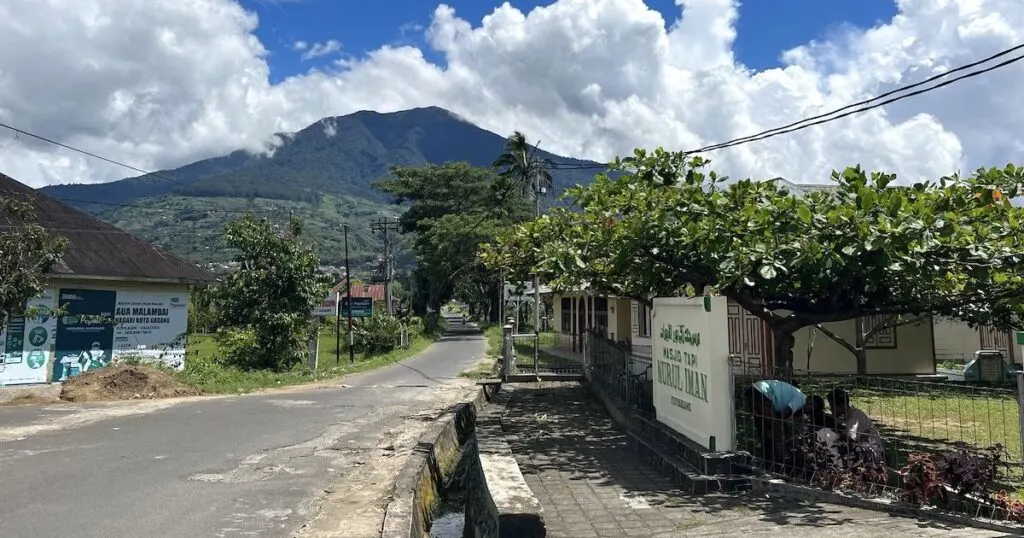
Koto Gadang is best known as a silversmiths village. The village began in the 17th century with a group of Indonesian people who crossed the valley from Bukittinggi in search of fertile land to grow crops.
They set up a small farming village in the area, until it eventually drew the attention of middle-class Dutch colonisers in the 1940s. They built Dutch-style family homes in the village.
The Dutch population were mostly involved in government administration and other scholarly jobs.
As a result, the village’s Indonesian population also began to work in the Dutch government or left to pursue higher education in other countries. Many Indonesian ministers, doctors, artists and scholars were born in Koto Gadang. Using their education, many fought for Indonesian independence.
A community of talented silversmiths also emerged in the village. They reside in the old Dutch family homes, which were abandoned by the Dutch when Indonesia regained its independence.
The Nurul Iman Mosque of Koto Gadang is one of the oldest mosques in Indonesia. It was built in 1856.
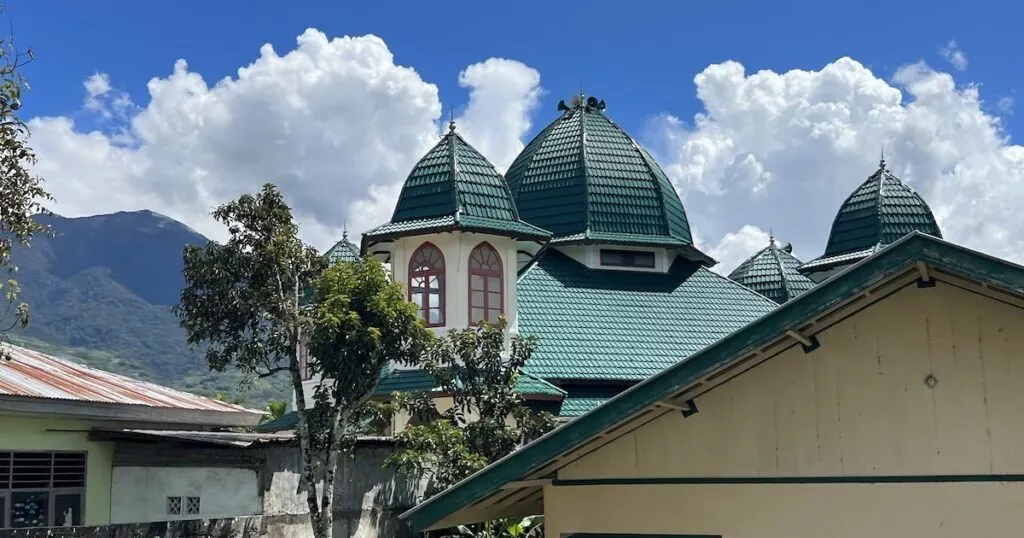
The Great Wall of Koto Gadang also has is own history. Before the Dutch rule in Bukittinggi, the path was used as a shortcut for local people to collect sand from the river. The stairs were cut out of the land and bamboo.
When the Dutch arrived, they rebuilt the wall out of concrete to resemble the Great Wall of China.
Is Koto Gadang Worth Visiting?
Climbing the Great Wall of Koto Gadang and visiting the village’s silversmiths is by far one of the best things to do in Bukittinggi Sumatra. It will take one afternoon.
If you’re arriving by car instead, you only need a couple of hours.
Koto Gadang is worth visiting for:
- An easy hike up the historic Great Wall.
- Views over Sianok Canyon and paddy fields.
- Visiting traditional silversmiths which sell incredible jewellery and intricate models of Minangkabau palaces.
- Visiting one of Indonesia’s oldest mosques.
- Talking to locals.
- Understanding a small, often-overlooked piece of Sumatra’s history.
How to Get to Koto Gadang
There are two ways to get to Koto Gadang.
1. Climb the Great Wall of Koto Gadang
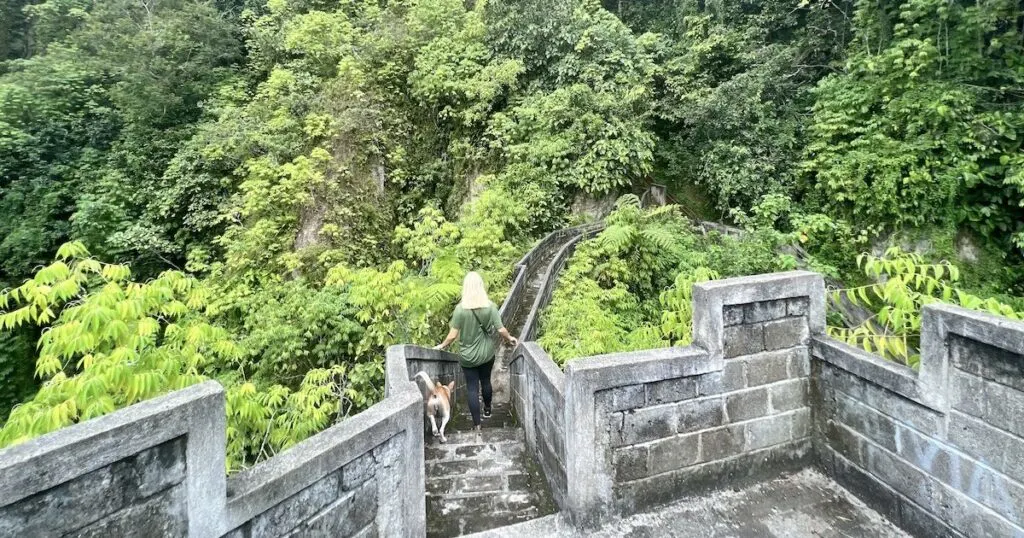
The first way to reach Koto Gadang is the most worthwhile. Your route begins in Bukittinggi at the base of Sianok Canyon, in an area of lush, green paddy fields.
This is the foot of the Great Wall of Koto Gadang, which has been used for centuries by villagers and school kids to travel to and from Bukittinggi.
The beginning of the trail starts from the area of Padi Ecolodge, as displayed in the map below. You can also track the Janjang Koto Gadang trail on AllTrails.
From Padi Ecolodge, continue walking along the lane towards the river until you reach a suspension bridge at the base of the wall.
2. Take a taxi
The second way to reach the silversmiths village is to take a Grab or taxi from Bukittinggi to the village. Grab is the cheapest option, although you will need an internet connection to order a car or scooter.
A private taxi will be costly, as the route takes 20 minutes. However, you will find plenty of drivers in Bukittinggi willing to take you for a reasonable price if you can haggle.
Where to Stay near Koto Gadang
The best place to stay near Koto Gadang is Bukittinggi. You can walk from Bukittinggi to the village on foot via the Great Wall or take a short 20-minute Grab to the village.
The city is also fascinating, with traditional food markets, ridiculously good street food, and Japanese tunnels built during their World War II invasion.
The best place to stay in Bukittinggi is Padi Ecolodge. It is a collection of Minangkabau-style wooden cabins surrounded by rice paddy fields at the base of Sianok Canyon. It’s positioned right next to where trek to Koto Gadang begins.
Free breakfast is included in every stay, and the friendly owner divides his time between Bukittinggi and the Netherlands.
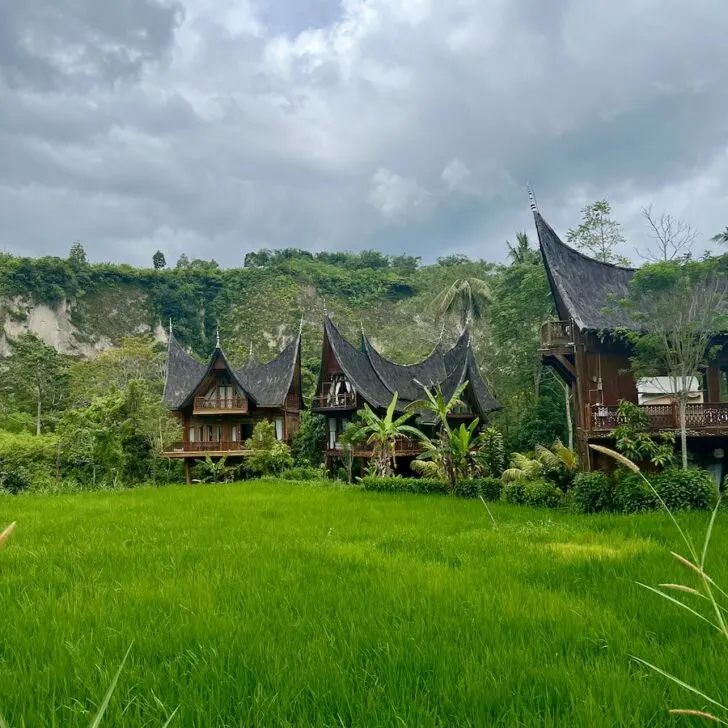
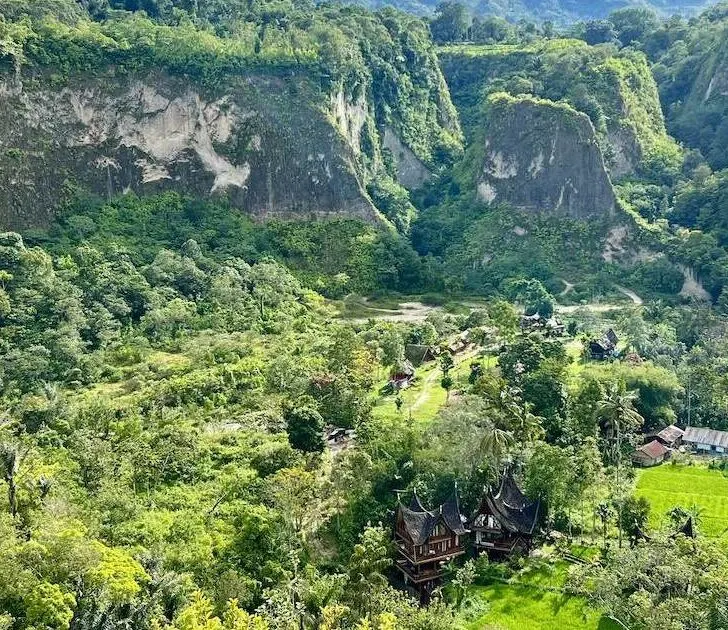
Padi Ecolodge
There are a number of luxury hotels in Bukittinggi, out of which these three are the best options:
- Novotel Bukittinggi: The Novotel is only five minutes’ walk away from the centre of Bukittinggi. With a swimming pool, spa, Minangkabau architecture, and a large restaurant, it’s one of the best hotels in the city.
- Grand Rocky Hotel: The Grand Rocky has jungle views, luxurious rooms, and a popular bar and restaurant.
- The Balcone Hotel & Resort: The Balcone has the best views in Bukittinggi and two restaurants serving Asian cuisine.
The best budget and backpacker accommodation in Bukittinggi is Aur Kuning Hostel. This is where I stayed during my time in Bukittinggi. I returned twice, mainly because of the kind staff, the free tea and coffee and the gorgeous rooftop terrace.
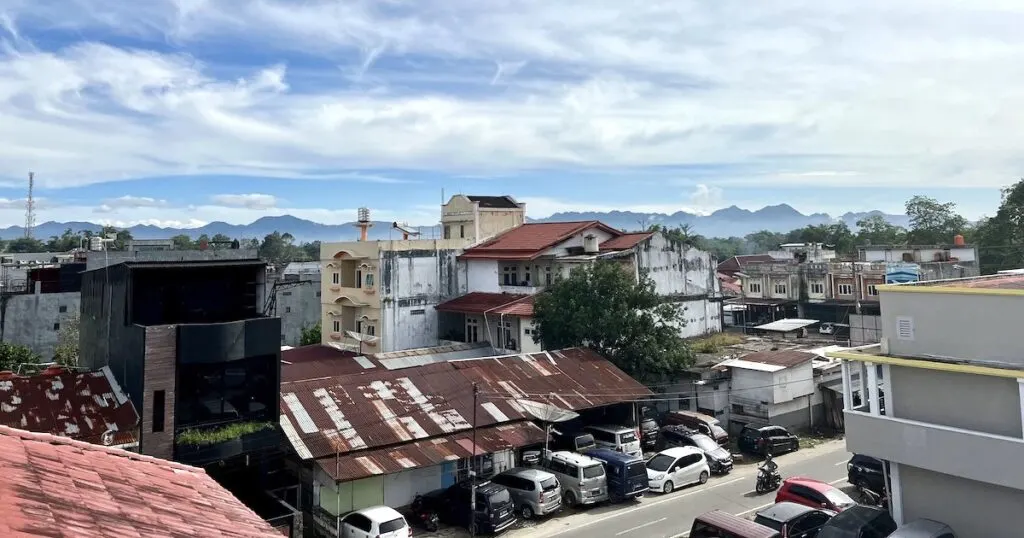
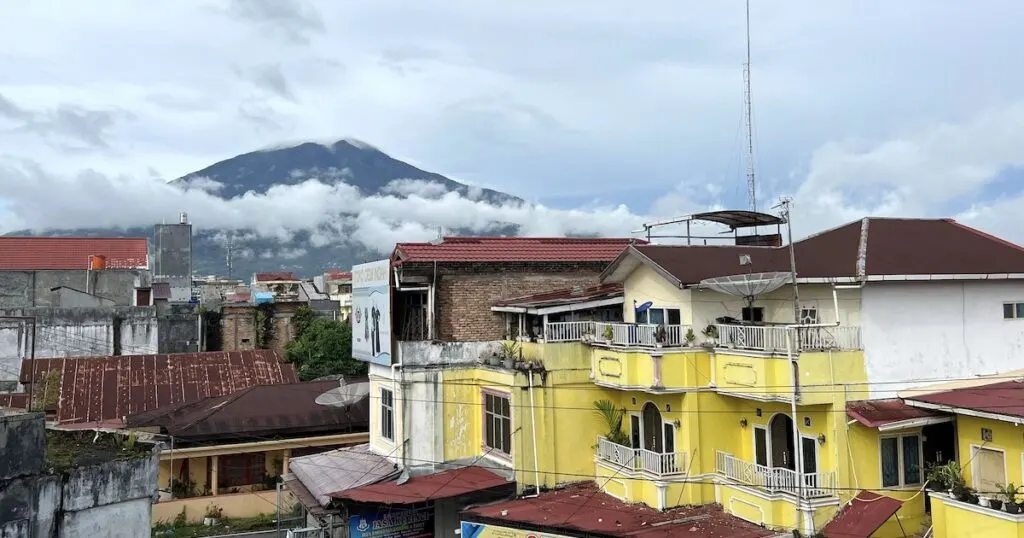
Views from Aur Kuning Hostel
There are no hostel dorms in Bukittinggi, so this is a cheap, comfortable guesthouse 10 minutes’ walk from the Aur Kuning bus terminal.
Things to Do in Koto Gadang
1. Climb the Great Wall of Koto Gadang
Climbing the Great Wall of Koto Gadang isn’t just one of the best things to do in Bukittinggi and Koto Gadang. It’s also the most adventurous route to the village.
The hike begins at Padi Ecolodge. This location is a short scooter or Grab ride from the Sianok Canyon Panoramic Park and the Japanese caves in Bukittinggi, or a short walk along the road if you’re cautious.
Because it’s so accessible from the underground caves and Panoramic Park, it makes sense to visit the park in the morning and take the hike on the same day, returning in the afternoon.
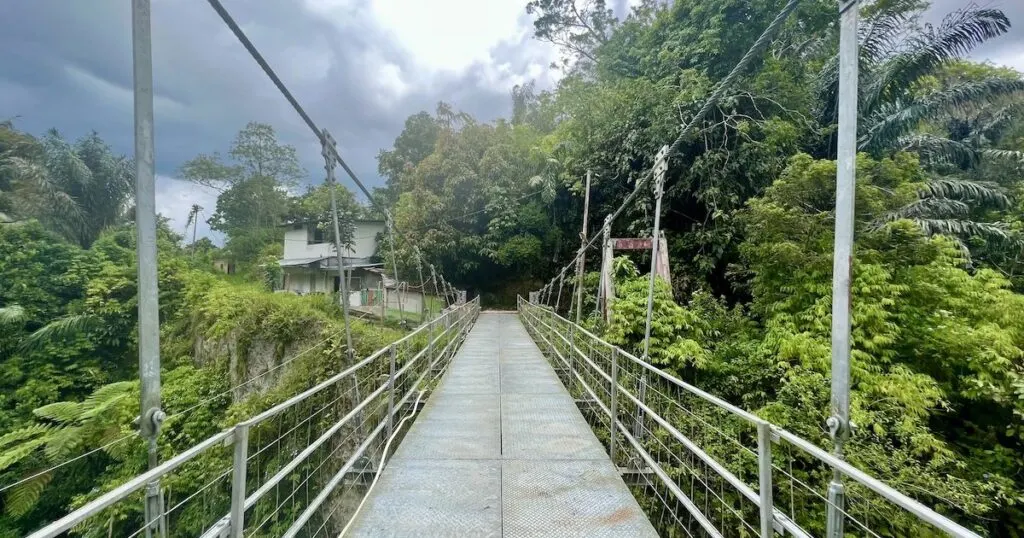
The walk starts in an area surrounded by lush, green paddy fields before advancing past a very bedraggled toilet shack to a suspension bridge.
We picked up a third hiker in the area of Padi Ecolodge, a very friendly dog who we were later told loves to join tourists on their hike to and from the silversmiths village. She lead us all the way up and down from the village and made a great partner in crime. If you’re lucky, you might meet her.
The original wall and suspension bridge, called Red Bridge by locals, were erected so that villagers could transport sand from the river to the village. The wall was rebuilt by the Dutch, as I mentioned earlier, to resemble the Great Wall of China.
On either side of the bridge, there are houses. During my visit, a man emerged from the first house offering his guiding services for a trek through the base of Sianok Canyon. Intent on visiting Koto Gadang, we turned him down.
If you’re interested in trekking, you may be able to take advantage of this.
At the second house on the other side of the bridge, a lady emerged batting a cleaning brush at a number of monkeys who had ventured too close to her porch.
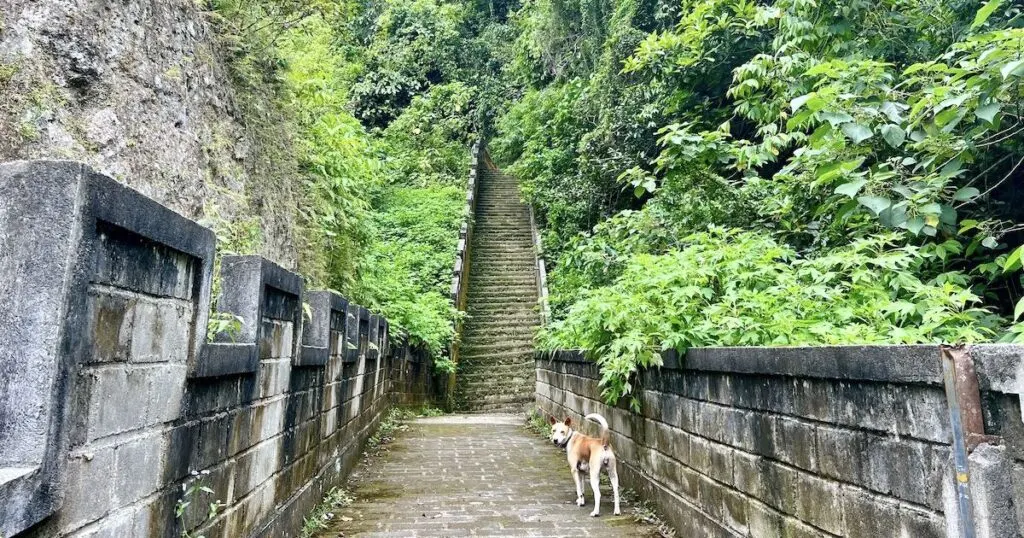
The Great Wall of Koto Gadang features over 100 steps, which are slightly slippery with morning dew or rain.
Turrets branch off to the side of the wall, providing different perspectives of Sianok Canyon. On the other ridge, you can spot the Panoramic Park where the Japanese tunnels lie underground.
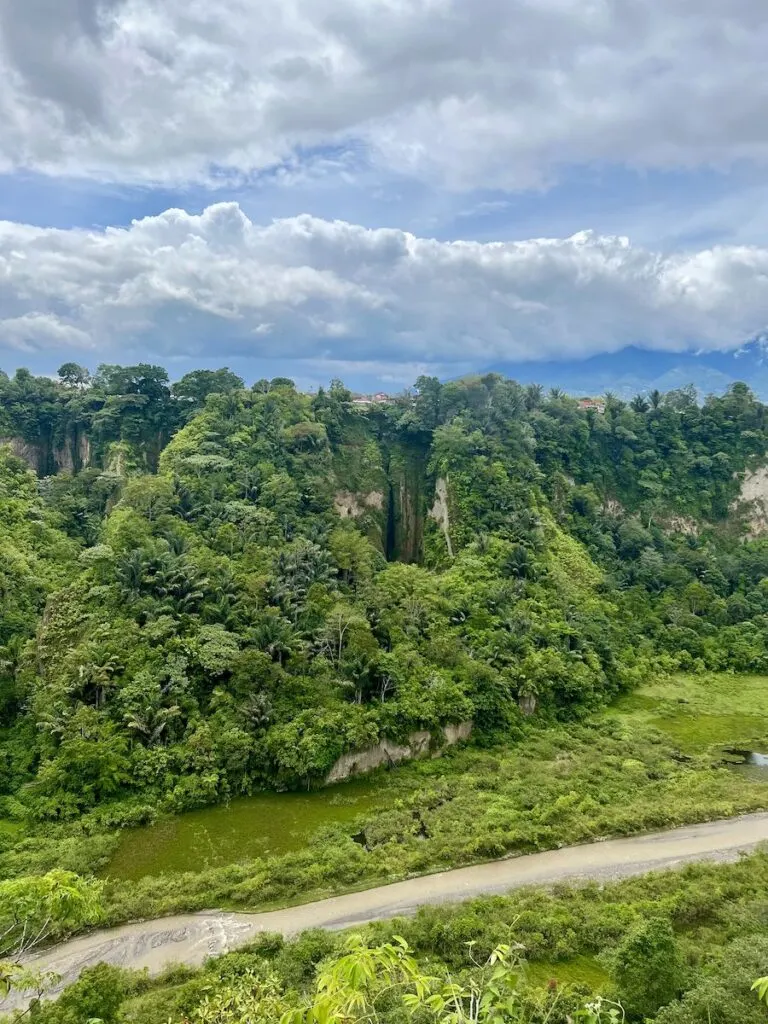
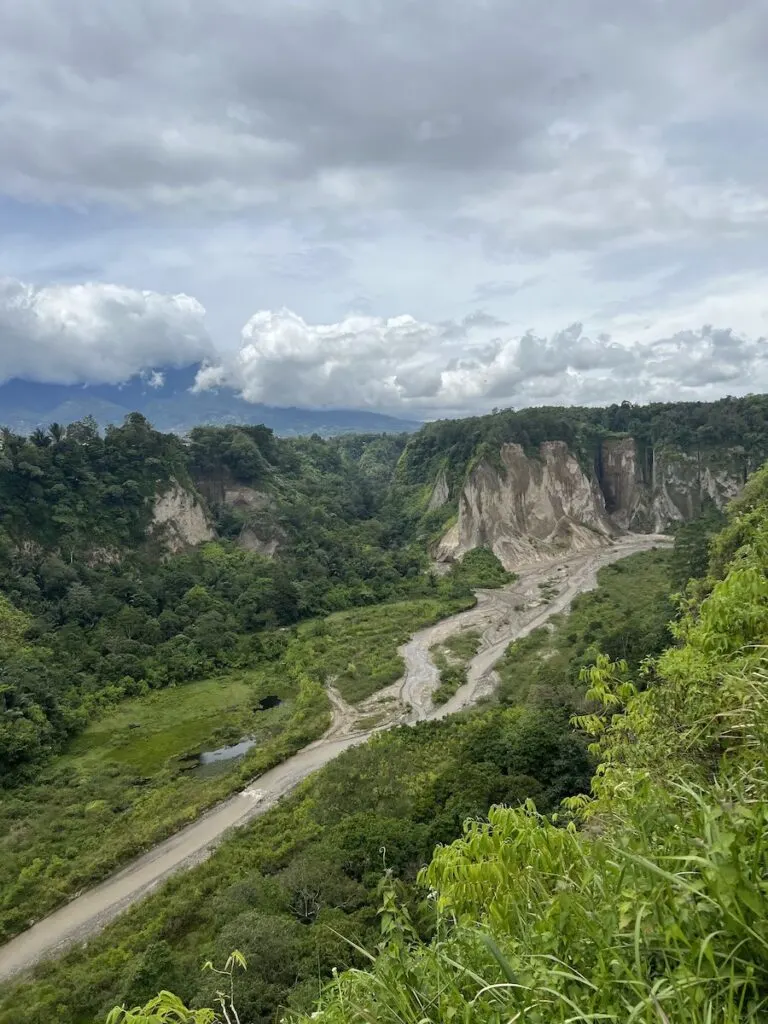
At the very top of the stairs, turn left to find a final viewpoint over Sianok Canyon. It’s directly opposite the Panoramic Park.

Straight forwards, a short lane leads uphill into the centre of the village of Koto Gadang. This lane is lined with a few houses, where we found some loose house dogs. They had quite a bark at the dog from Padi Ecolodge, so I’d recommend being cautious when you walk past.
The total elevation gain on the hike is approximately 144 metres and the length out and back is 2.7 kilometres.
2. Visit a silversmiths shop
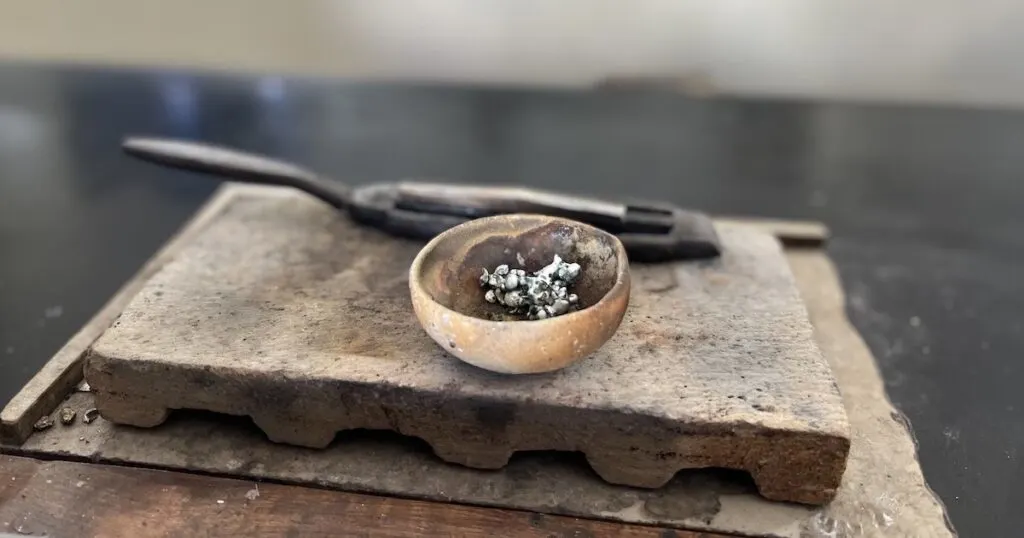
The old Dutch family houses in Koto Gadang host some of Sumatra’s most famous and talented silversmiths.
They sell exquisite silver models of Minangkabau palaces and huts, as well as rings, necklaces, bracelets, chains and other silver jewellery.

The bigger models cost a pretty penny (thousands of pounds, to be exact), but if you can afford it, I’m sure that you won’t find a more unique mantlepiece item. There are smaller models, which cost hundreds of pounds.
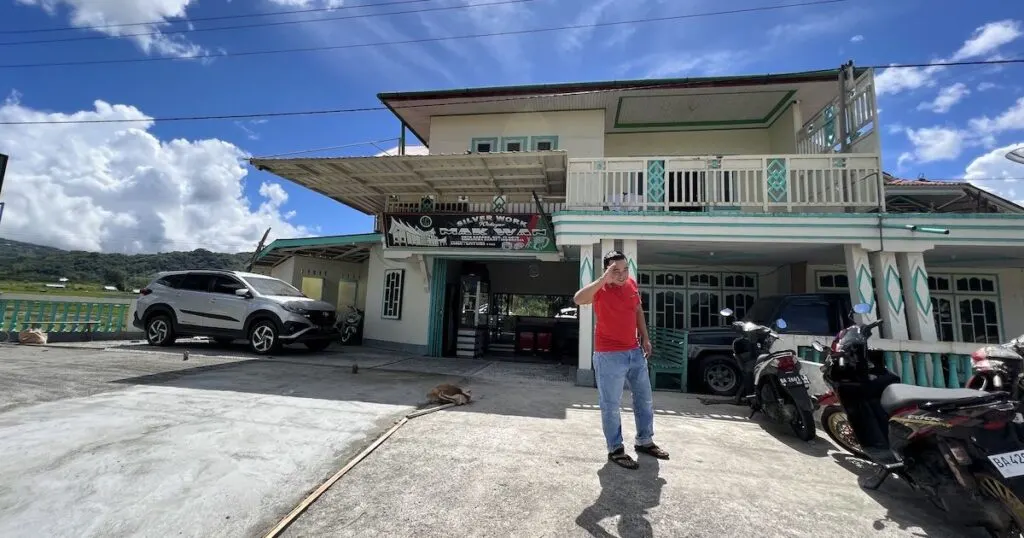
The best silversmiths in the village is Silver Work Weli Syar, which is located at the very end of the street Jl Sawahan, just past the mosque.
Weli Syar Mak Wan’s work is considered to be the finest in the village. If you’re lucky, you might catch the man himself at work, or at least get a salute goodbye as we did.
3. Check out one of Indonesia’s oldest mosques

You won’t have any trouble locating Koto Gadang’s mosque. With huge blue domes and arched windows, it sits bang in the centre of the village surrounded by the paddy fields and Dutch houses.
The mosque has two names: Nurul Iman Mosque and Tapi Koto Gadang Mosque.
It’s one of the largest mosques in Indonesia. When it was first built in 1856, it had typical cone-shaped Minangkabau-style roofs.
It was rebuilt in 1932 following the destruction of parts of the mosque in the 1926 Padang Panjang earthquake. The new design was totally different.
However, the walls were once again destroyed in the 2007 earthquake. Afterwards, the original Minangkabau design was restored.
4. Trek inside Sianok Canyon
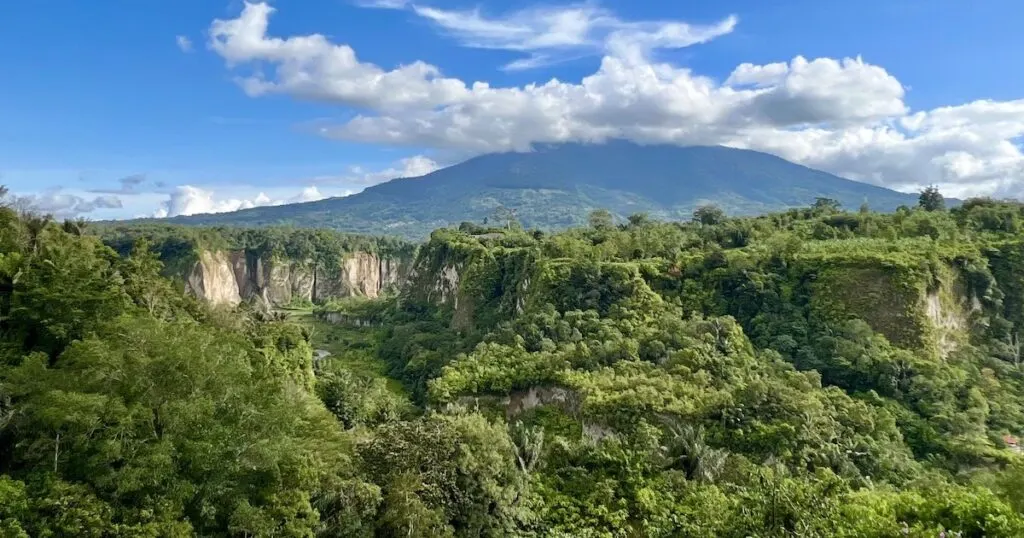
If you have time on your return route from Sianok Canyon, you may choose to take advantage of a local’s guide services and hike inside Sianok Canyon.
Trekking inside the canyon is best done with an experienced local guide who knows the route. I heard from other tourists that some of the routes scale the side of the canyon and others lazily wind along the river, so there are different levels of difficulty available.
Places to Visit After Koto Gadang
1. Bukittinggi
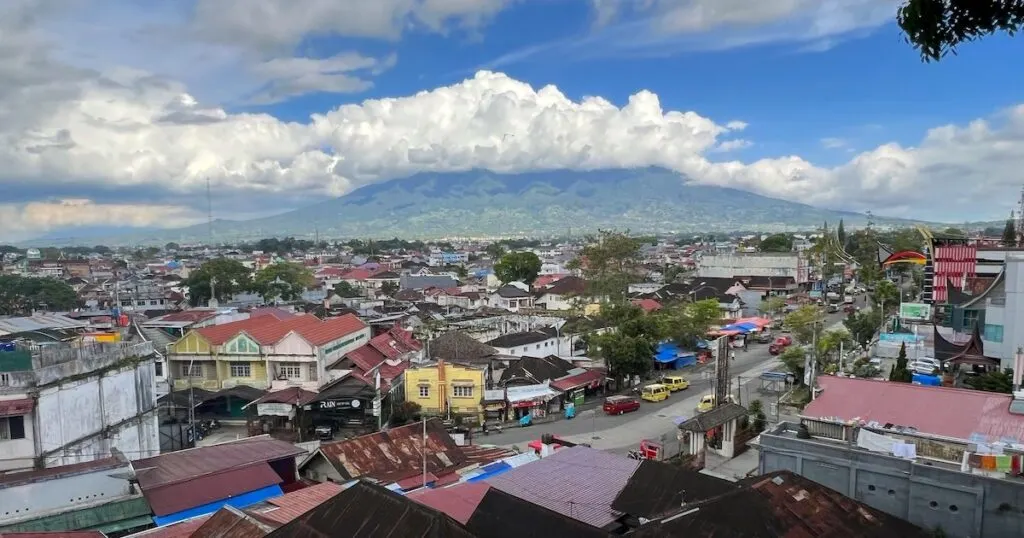
Bukittinggi is one of the largest cities in west Sumatra and by far my favourite place to try west Sumatran food delicacies, visit local markets, and talk to the locals.
The city’s underground Japanese tunnels, built during their invasion in World War II, are open to anyone who wants to explore an important and sober piece of the city’s history. The Panoramic Park also has incredible views over Sianok Canyon.
For inspiration, check out my guide to the best things to do in Bukittinggi Sumatra.
2. Maninjau Lake
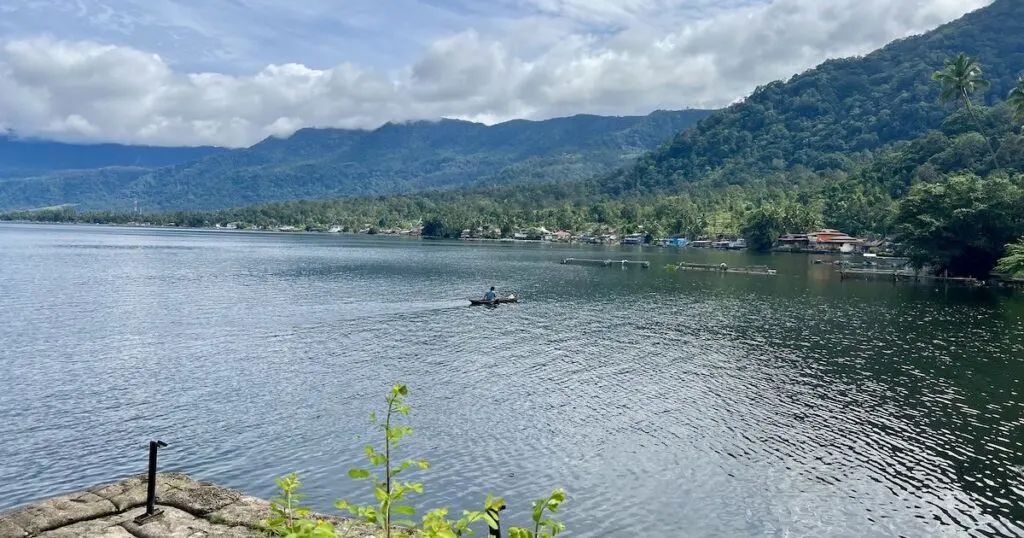
Maninjau Lake may not be suitable for swimming like Lake Toba in north Sumatra, but this crater lake is smaller and far more intimate. It was my favourite of the two. It’s surrounded by rice terraces and fishing villages.
The Puncak Lawang Viewpoint on a hilltop above the lake is one of the best viewpoints in west Sumatra.
For inspiration, check out my guide to Maninjau Lake.
3. Harau Valley

In Harau Valley, it doesn’t matter whether you want to relax or go on one of the most adventurous hikes of your life. This Yosemite lookalike has a number of hiking trails, waterfalls and rock climbing routes (this last one is for pros only).
Abdi Homestay is a peaceful spot to stay under one of the tallest waterfalls; I took a small workcation here.
For inspiration, check out my Harau Valley travel guide.
Suggested reading:
- 12 Best Hotels in Lake Toba and Samosir Island
- What to Wear in Sumatra + Free Packing List
AUTHOR
Katie Treharne
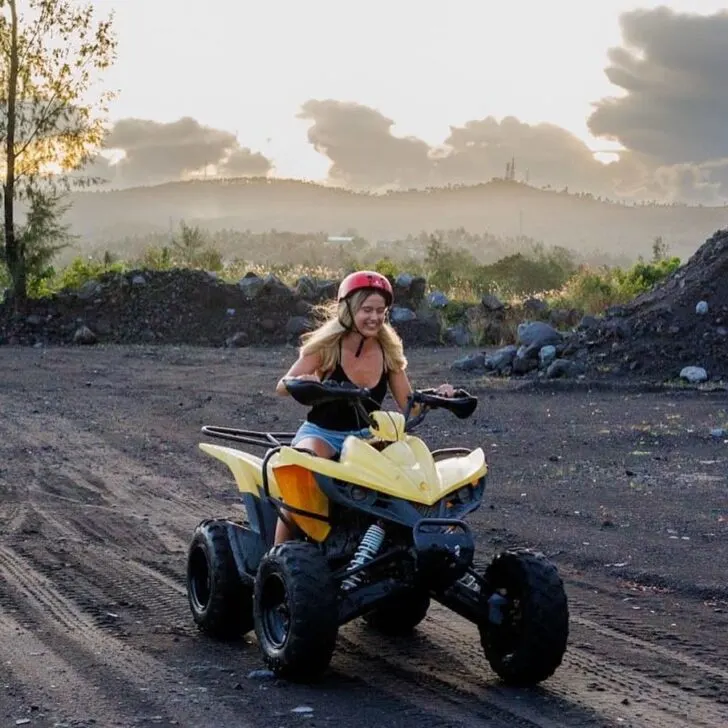
I’m Katie, the owner of Escape Artist Katie. I have been travel writing since 2018, including writing for luxury travel magazines and publications such as Wanderlust.
As well as being a digital nomad who works and lives abroad permanently, I’m a big advocate for offbeat travel and pushing yourself out of your comfort zone.
I hope you found my article useful – find out more about me here or keep up with my travels on Instagram.

